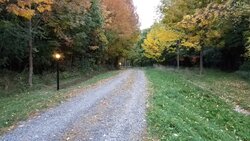Hi all,
So I have run my share of wire in new houses and outside before, but always for audio systems. This is my first time running power out to a location outside, but I am not a stranger to conduit, pulling wire, etc.
We need to keep the water for our chickens from freezing over the winter, and I am going to use a pipe heater cable to do that ( http://www.homedepot.com/p/Frost-King-6-ft-Electric-Water-Pipe-Heat-Cable-HC6A/202262328 ).
Problem is getting power out to the coop, it's about 150' away from the house. I can easily get wires outside, and run them through 1" metal conduit out to the coop, then set up an outdoor outlet on the outside of the run.
No idea what gauge wire to use, though. Any recommendations? I know I can't just pull romex through, it has to be black/white/ground pulled together.
Thanks!
So I have run my share of wire in new houses and outside before, but always for audio systems. This is my first time running power out to a location outside, but I am not a stranger to conduit, pulling wire, etc.
We need to keep the water for our chickens from freezing over the winter, and I am going to use a pipe heater cable to do that ( http://www.homedepot.com/p/Frost-King-6-ft-Electric-Water-Pipe-Heat-Cable-HC6A/202262328 ).
Problem is getting power out to the coop, it's about 150' away from the house. I can easily get wires outside, and run them through 1" metal conduit out to the coop, then set up an outdoor outlet on the outside of the run.
No idea what gauge wire to use, though. Any recommendations? I know I can't just pull romex through, it has to be black/white/ground pulled together.
Thanks!



